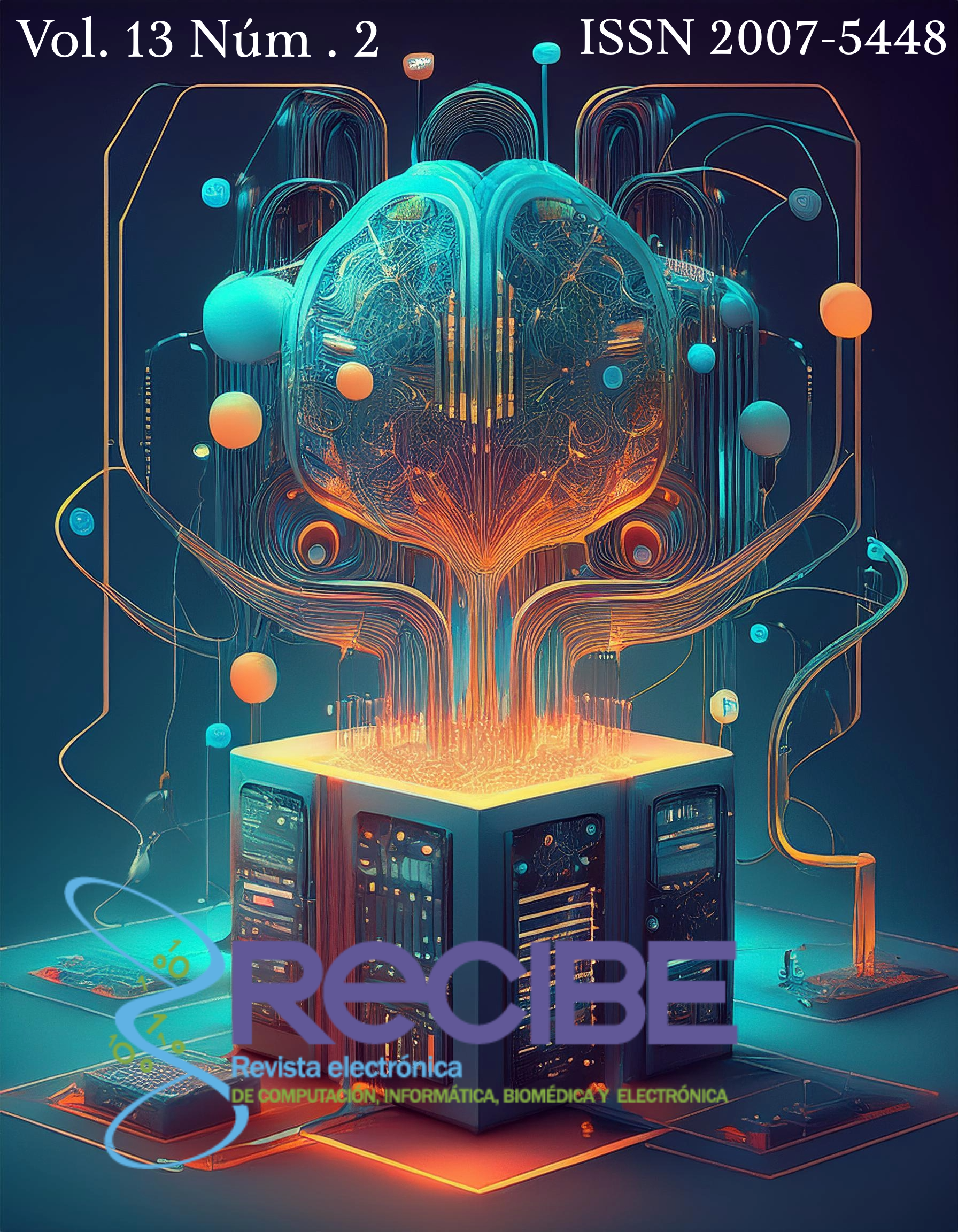Español
DOI:
https://doi.org/10.32870/recibe.v13i2.369Keywords:
EspañolAbstract
Although artificial intelligence (AI) has become increasingly common and accessible in recent years, particularly with tools like ChatGPT, its origins date back over 50 years. Since the 1950s, when Alan Turing proposed the first test to evaluate a machine's ability to mimic human behavior, AI has experienced a series of advancements and setbacks. However, AI has grown substantially in the last decade, integrating into various aspects of daily life, including academia. The adoption of AI in academia has recently surged, particularly among high school and university students, through tools like ChatGPT. In addition to ChatGPT, other AI applications such as Inciteful, Litmaps, Jenni, Wisio, and Elicit have facilitated the efficient collection and analysis of large datasets. Tools like Grammarly, Quillbot, and Jarvis have also become valuable aids for drafting academic texts. Given this context, it is essential to examine both the opportunities that AI presents in the academic field and the critical areas that require attention to ensure these technologies' ethical and responsible use. This article explores AI's origins and historical evolution, highlights various AI tools applicable in academic settings, and examines the aspects requiring careful consideration for ethical and responsible use. It concludes by discussing potential future directions for developing these technological tools.References
Bahrini, A., Khamoshifar, M., Abbasimehr, H., Riggs, R. J., Esmaeili, M., Majdabadkohne, R. M., & Pasehvar, M. (2023). ChatGPT: Applications, Opportunities, and Threats. 2023 Systems and Information Engineering Design Symposium, SIEDS 2023, 274–279. https://doi.org/10.1109/SIEDS58326.2023.10137850
Cossette-Lefebvre, H., & Maclure, J. (2023). AI’s fairness problem: understanding wrongful discrimination in the context of automated decision-making. AI and Ethics, 3(4), 1255–1269. https://doi.org/10.1007/s43681-022-00233-w
Cotton, D. R. E., Cotton, P. A., & Shipway, J. R. (2023). Chatting and cheating: Ensuring academic integrity in the era of ChatGPT. Innovations in Education and Teaching International, 1–12. https://doi.org/10.1080/14703297.2023.2190148
Jackson, P. (1998). Introduction to Expert Systems (3rd ed.). Addison-Wesley Longman Publishing Co., Inc.
Krizhevsky, A., Sutskever, I., & Hinton, G. E. (2017). ImageNet classification with deep convolutional neural networks. Communications of the ACM, 60(6), 84–90. https://doi.org/10.1145/3065386
LeCun, Y., Bengio, Y., & Hinton, G. (2015). Deep learning. Nature, 521(7553), 436–444. https://doi.org/10.1038/nature14539
McCarthy, J. (1974). Artificial intelligence: a paper symposium: Professor Sir James Lighthill, FRS. Artificial Intelligence: A General Survey. In: Science Research Council, 1973. Artificial Intelligence, 5(3), 317–322. https://doi.org/10.1016/0004-3702(74)90016-2
Miao, F., & Holmes, W. (2023). Guidance for generative AI in education and research. UNESCO. https://doi.org/10.54675/EWZM9535
Moor, J. (2006). The Dartmouth College Artificial Intelligence Conference: The Next Fifty Years. AI Magazine, 27(4), 87–91.
Nadkarni, P. M., Ohno-Machado, L., & Chapman, W. W. (2011). Natural language processing: an introduction. Journal of the American Medical Informatics Association, 18(5), 544–551. https://doi.org/10.1136/amiajnl-2011-000464
Pisica, A. I., Edu, T., Zaharia, R. M., & Zaharia, R. (2023). Implementing Artificial Intelligence in Higher Education: Pros and Cons from the Perspectives of Academics. Societies, 13(5), 118. https://doi.org/10.3390/soc13050118
Radford, A., Narasimhan, K., Salimans, T., & Sutskever, I. (2018). Improving Language Understanding by Generative Pre-Training. In OpenAI blog.
Radford, A., Wu, J., Child, R., Luan, D., Amodel, D., & Sutskever, I. (2019). Language Models are Unsupervised Multitask Learners. In OpenAI blog (Vol. 1).
Samala, A. D., Rawas, S., Criollo-C, S., Bondarenko, O., Gentarefori Samala, A., & Novaliendry, D. (2024). Harmony in Education: An In-Depth Exploration of Indonesian Academic Landscape, Challenges, and Prospects Towards the Golden Generation 2045 Vision. TEM Journal, 2436–2456. https://doi.org/10.18421/TEM133-71
Silver, D., Huang, A., Maddison, C. J., Guez, A., Sifre, L., van den Driessche, G., Schrittwieser, J., Antonoglou, I., Panneershelvam, V., Lanctot, M., Dieleman, S., Grewe, D., Nham, J., Kalchbrenner, N., Sutskever, I., Lillicrap, T., Leach, M., Kavukcuoglu, K., Graepel, T., & Hassabis, D. (2016). Mastering the game of Go with deep neural networks and tree search. Nature, 529(7587), 484–489. https://doi.org/10.1038/nature16961
Turing, A. M. (1950). Computing Machinery and Intelligence. Mind, LIX(236), 433–460. https://doi.org/10.1093/mind/LIX.236.433
Vaswani, A., Shazeer, N., Parmar, N., Uszkoreit, J., Jones, L., Gomez, A. N., Kaiser, Ł., & Polosukhin, I. (2017). Attention Is All You Need. Proceedings of the 31st International Conference on Neural Information Processing Systems. https://doi.org/10.5555/3295222.3295349
Weizenbaum, J. (1966). ELIZA—a computer program for the study of natural language communication between man and machine. Communications of the ACM, 9(1), 36–45. https://doi.org/10.1145/365153.365168
Yawson, R. M. (2024). Perspectives on the promise and perils of generative AI in academia. Human Resource Development International, 1–12. https://doi.org/10.1080/13678868.2024.2334983


